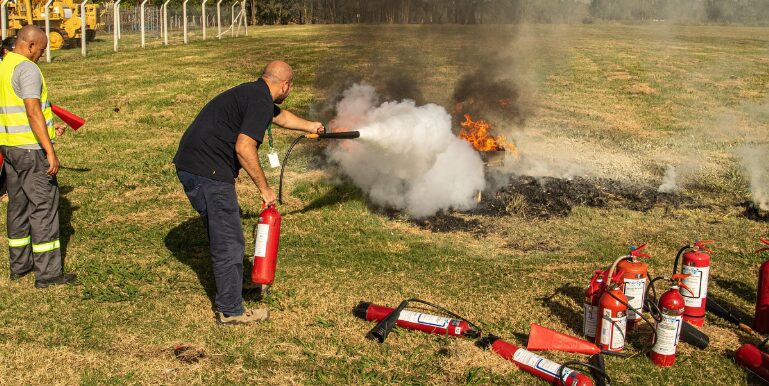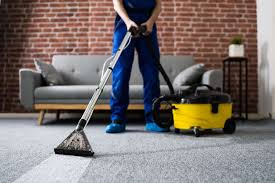Essential Fire Safety Equipment: Protect Your Home and Family from Flames

What are the most important types of fire safety equipment for homes?
Smoke Alarms: Your First Line of Defense
A smoke alarm detects fire at its earliest stage, so it is a critical component of any fire safety system. This device alerts occupants through an audible alarm, allowing them precious seconds to evacuate the premises. It is highly advisable to place a smoke alarm in every bedroom and on every level in the home, including the basement as well as in every area outside sleeping locations. Smoke alarms will also remain in optimal working condition if regular maintenance is practiced like testing the alarms every month and changing the batteries every year. Interconnected alarms collectively enhance home safety, as all sets of alarms will go off when one is triggered.
If you are looking for more information about Fire Safety Equipment – Dadao go here right away
Fire Extinguishers: Choosing The Right Type For Your Needs
Fire extinguishers allow the user to quickly suppress small fires before they escalate, but it is crucial to choose the right kind for the job. Residential fire extinguishers are categorized as A, B or C for different classes of fires. Class A is for combustibles like wood and paper, class B is for flammable liquids, and class C is for electrical fires. Multipurpose ABC extinguishers are the common choice for homes as they can be used for several types of fires. Make sure everyone knows where the extinguishers are located and know how to properly use them with the PASS (pull, aim, squeeze, and sweep) technique.
Carbon Detectors: Undervalued Devices Guarding Us Against Unknown Dangers
Carbon monoxide (CO) is a dangerous gas. It is colorless and odorless making the inhalation extremely fatal. The best way to protect yourself from exposure to carbon monoxide is to install carbon detectors, as these devices check CO levels and raise an alarm when they reach unsafe levels. Detectors should be placed outside sleep areas on all floors of the house, as well as in other areas mandated by local regulations. To keep their reliability, regularly check and test devices and replace them every 5-7 years or as per manufacturer’s instructions. Combining smoke alarms with CO detectors improves safety and guarantees full protection.
How do fire extinguishers work and which type should I choose?
Understanding Different Classes of Fire Extinguishers
Different types of extinguishers are optimized for certain types of fires. The varieties in common use include:
- Class A: For wood, paper, and cloth.
- Class B: For flammable liquids, such as gas, oil, and paint.
- Class C: For electrical fires involving wiring, appliances, or even circuit breakers.
- Class D: For combustible metals like magnesium or titanium found in industrial settings.
- Class K: Specifically for fires caused by oils or fats, usually in a kitchen.
Choosing the most suitable extinguisher is paramount for guaranteeing effectiveness while avoiding hazards.
Proper Use and Maintenance of Fire Extinguishers
Knowing how to use a fire extinguisher properly can save lives. For easy memorization, think of the four-step PASS approach:
- Remove the safety pin.
- Aim at the bottom of the fire.
- Pull the lever of the extinguisher.
- Lastly, sweep the nozzle from side to side until the fire is out.
To ensure fire extinguishers work correctly, perform regular maintenance. Check the pressure gauge to make sure it is green every month, inspect the exterior for damage, and ensure the nozzle is not blocked. Professional inspections should be performed yearly, and fire extinguishers need to be recharged or replaced according to manufacturer guidelines.
Where to Place Fire Extinguishers in Your Home
Accurate positioning of fire extinguishers is necessary to achieve a swift counteraction in case of an emergency. The following places should be noted:
- Kitchen: Ensure that a Class K fire extinguisher is within reach due to the probability of cooking fires.
- Garage/Workshops: Keep a Class B or multi-purpose ABC extinguisher available for use on combustible liquids and materials.
- Bedrooms and Hallways: Store an extinguisher in a place that can be easily reached, with regards to the time of the day.
- Utility Rooms or Basements: If these areas house electrical panels or heating devices, Class C extinguishers must be provided.
Extinguishers need to be stored in open spaces where they will not be knocked over, ideal locations include on walls or raised locations. They should be placed where they can be seen without being reachable by children or blocked by furniture. Routinely assess your fire safety plan and make certain that all members of the household understand where the fire extinguisher and how to use it.
What are fire sprinkler systems and do I need one in my home?
Benefits of Residential Fire Sprinkler Systems
The effectiveness of residential fire sprinkler systems in enhancing safety in a home cannot be overemphasized. These systems are set to activate at the onset of a fire, frequently controlling or completely extinguishing flames before the arrival of the fire department. Such a quick response greatly minimizes fire damage, thus saving property and most valuable lives. Fire sprinklers work independently of one another, which implies that only the sprinkler closest to the fire will turn on, thus decreasing the volume of water used in comparison to fire hoses. Also, houses with sprinklers may have lower insurance premiums because insurance companies acknowledge the lesser probability of sustained fire damage.
Services That Require Consideration
The installation of residential fire sprinkler systems should only be completed with licensed professionals. A thorough analysis of how the home is structured must be conducted because it determines where the sprinkler will be needed the most. Systems can be installed in new constructions or retrofitted into existing homes; however, retrofitting may involve some extra structural work. Routine inspections are required to maintain the system and ensure it remains functional long-term. Inspections should make sure that sprinkler heads are free from obstructions, the water sources are active, and the system has not been vandalized or broken. As much as it is important to conceal the system, adopting these strategies will ensure that it is concealed but will still allow it to be tested to local fire safety standards will prevent further damage from occurring.
Myths and Facts About Home Fire Sprinklers
Most people have various misunderstandings of home fire sprinkler systems. One example is the belief that all the home sprinklers will go off at once and flood an entire house. Only the sprinkler nearest to the fire activates, minimizing water damage. Some people think that smoke detection is enough which requires no further action. All smoke alarms do is notify the residents, whereas sprinklers actively work to extinguish the fires. Other people think that the cost of the installed system is unjustifiable, but the prices have gotten cheaper over the years, and for many, the cost-saving benefits from reduced property damage and loss of life far exceed the expense. Furthermore, most people do not take into account that new designs for sprinklers are very subtle and unobtrusive.
How can I create an effective fire escape plan for my family?
Mapping Out Escape Routes from Every Room
An efficient fire escape plan necessitates unobstructed and clear routes for escape for every room in your house. Start by determining at least two exits for each room, most commonly via a door or window, in case one route becomes blocked. Be certain that all doors and windows on the way are openable and will not have any obstructions. For those homes with multiple floors, purchase fire escape ladders that can be easily placed through upper-level windows. Record and refresh your memory frequently so that every person in your household knows how to safely evacuate the house.
Practicing Fire Drills and Designing a Meeting Point
Fire drills are vital for building and maintaining preparedness and minimizing reaction times and injuries to your family members during an emergency. Try to create several different situations and incorporate both primary and secondary escape routes while using them keeping them as low as possible to avoid smoke inhalation. Choose a safer meeting place outside the house that is both far enough for personal safety and close enough to account for everyone quickly. Stress the importance of not going back into the house after getting outside and ensure that everyone knows what to do when a family fire drill is called.
Unique Considerations for Pets and Children
It is important to incorporate the requirements of children and pets into a fire escape plan. Designate an adult who can help small children or those who need assistance during the evacuation. In the case of older children, motivate them to escape by themselves, even if they get separated from the group as long as they remember where the assembly point is. For pets, you should always have carriers, leashes, or collars near exits and consider their needs during regular drills. Always remember that people come first, and if the situation is unsafe, do not go back in the house to get the pet.
What role do fire alarms play in home fire safety?
Types of Fire Alarm Systems: Wired vs. Wireless
Like most alarm systems, fire alarms fall under two categories: wired and wireless. Each has its unique benefits. Wired fire alarm systems are physically integrated into the electrical framework of a building. This makes these systems rugged and reliable because they are not prone to a lot of interference. They are a good choice to consider if the property has a long lifespan and maintenance can be done periodically. Wireless fire alarm systems on the other hand, connect devices through the use of radio frequencies. These systems are more flexible and easier to install, which makes them ideal for older homes or temporary installations. Both versions need to be compliant with the local fire safety laws and requirements of the household.
Correct Placement of Fire Alarms In Your Home
Fire alarms should be placed in the proper locations for optimal use. Alarms should be placed on every level of the house, including the basement, as well as in every bedroom. In addition, alarms should also be placed in the hallways outside the bedrooms and at the top of the stairs. Alarms should not be placed too close to cooking appliances, steam-emitting showers, or windows and vents as these can set off false alarms. Proper spacing between alarms as set by the manufacturer’s guidelines will provide appropriate smoke coverage and ensure the best response time if there is a fire.
Care and Maintenance of Your Fire Alarm System
To ensure the proper function of the fire alarms when needed, regular care and maintenance is a necessity. For testing purposes, most fire alarm systems have a test button that can be pressed once a month to verify it’s functioning properly. Another precaution for battery-operated alarms is to change the batteries at least one time a year or once the low-battery alert is activated. For all other systems, the unit itself should be cleaned to remove any dust particles and sensitive wires should be checked for signs of damage. Fire alarm systems should also be replaced every seven to ten years in order to function properly over time.
Are there any advanced fire safety technologies I should consider?
Smart Smoke Detectors and Their Features
The next step in the evolution of home fire detection devices is the smart smoke detector. By harnessing modern connectivity features, these detectors can link to mobile applications, notifying users in real time when carbon monoxide or smoke is detected even when they are off the premises. Many smart detectors utilize voice alert systems that inform users of the exact cause and the location of the alarm, thus improving response time in emergencies. Further, some models have automated self-testing capabilities and provide users with status updates, thus eliminating excessive manual maintenance. Interoperability with smart home ecosystems allows these detectors to work in tandem with other safety devices like smart thermostats or security cameras, thus improving the prevention of fire hazards.
Targeted Fire Suppression Systems
Systems for fire suppression are used for specific fire defense in most hazardous areas like kitchens, garages, and workshops. For instance, kitchen fire suppression systems typically include heat-activated extinguishers optimized for the control of grease fires. These can utilize water mists or chemicals that extinguish flames with minimal damage to the vicinity. The installation of tailored suppression systems can help minimize the fire hazard greatly and give protection, especially in domestic areas where cooking is a major activity. These systems’ proper functioning greatly relies on professional installation and regular inspections.
Emergency Lights and Exit Signage in Big Houses
Illuminated emergency lights and exit signs can serve as an integral part of the fire safety plan for a bigger home. These systems help to ensure that all persons are able to evacuate safely during an emergency, especially in instances when power is lost due to fire. Emergency lighting adequately lights up the hallways, staircases, and other marked places of evacuation, whereas exit signs show the direction of safety. Most of these systems have battery backups that maintain them operational during electrical outages. With the installation of emergency lights and exit signage, a homeowner can achieve the goal of effective evacuation plans which reduces the chances of injuries during these critical circumstances.
How often should I inspect and replace my fire safety equipment?
Recommended Inspection Schedules for Different Devices
To achieve the desired functionality, fire safety equipment should be inspected regularly as per predetermined schedules. Smoke alarms require monthly testing, and battery replacement needs to be done within a year, or earlier after low-battery alerts. Fire extinguishers require visual inspections every month to identify any damage, corrosion, or pressure loss, while they should be serviced by professionals at least once a year. Sprinkler systems need professionally evaluated at least once every year. Emergency lighting and exit signs are supposed to be checked every month along with their backup system for proper working order.
Signs That It’s Time to Replace Your Fire Safety Equipment
Ultimately, all fire safety equipment becomes less useful over time due to wear and tear, environmental conditions, or the technology they use becoming obsolete. After every ten years, smoke alarms need replacing because their inner sensors become degraded in most cases regardless of its outward functionality. Screws and bolts which support the required parts of the frame need to be replaced immediately when suffering from damage like rust, leak, and broken pressure gauge. Exit signs and emergency lighting systems are to be updated when they do not pass the normal testing or their illumination is too low. Additionally, components sprinkler systems are to be replaced when large amounts of corrosion, leakage, or mechanical problems occur during regular inspections.
Collaboration with Community Fire Departments for Consultation and Inspections
It is common for local fire departments to assist with the upkeep of fire safety systems. They are also helpful when creating strategies for inspection timelines, equipment testing, and even proper installation techniques. Furthermore, local fire departments possess information that can enable residents to ensure that they comply with existing fire codes. As part of their community outreach efforts, certain departments may consider going into the field to offer educational sessions on fire prevention. Partnering with fire department personnel adds another tier of support that guarantees the accuracy of fire safety equipment.

Source: Essential Fire Safety Equipment: Protect Your Home and Family from Flames




